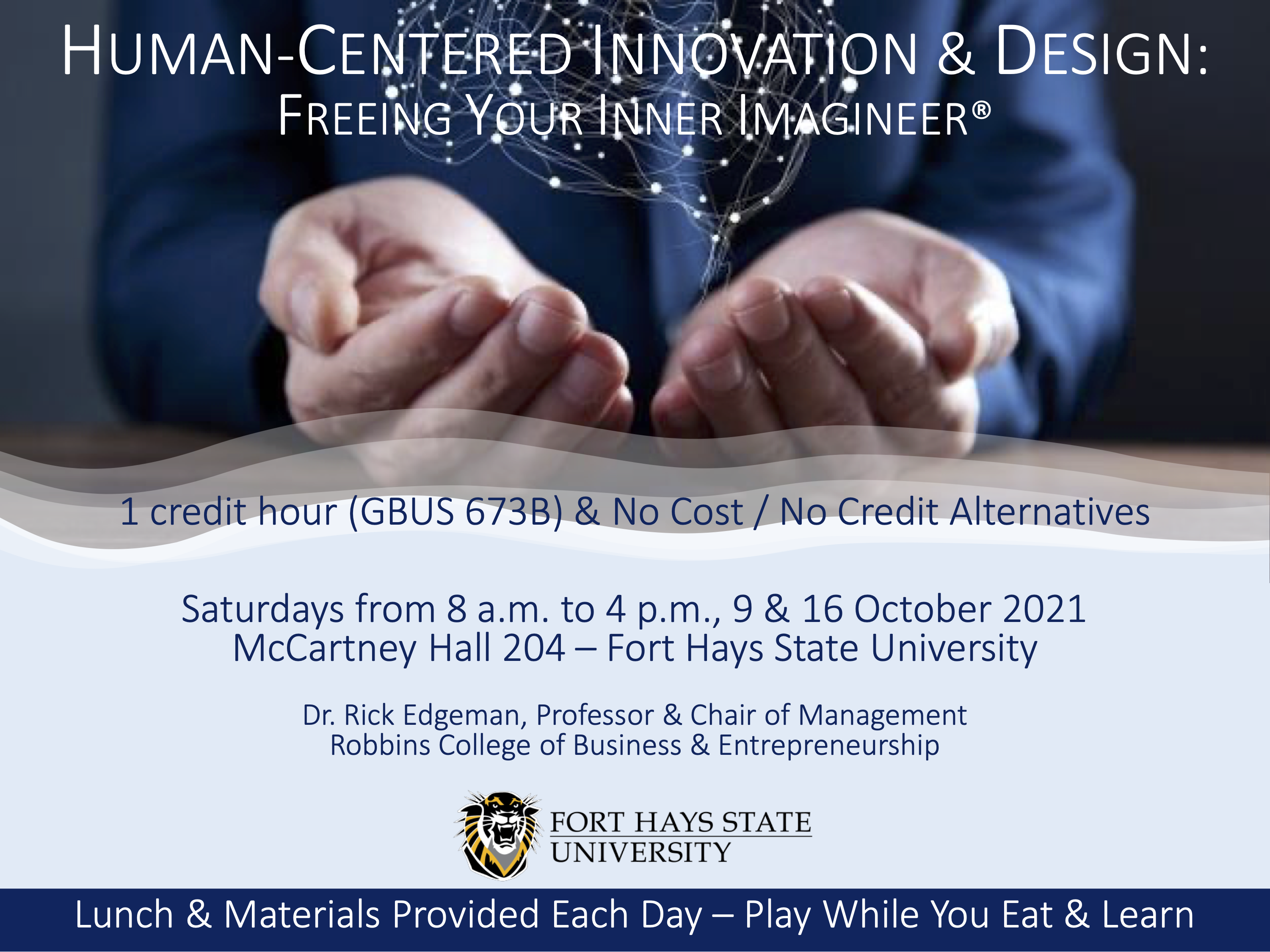
HUMAN-CENTERED INNOVATION & DESIGN: INNOVATING FOR PEOPLE & THE ENVIRONMENT
8 a.m. to 4 p.m. in McCartney 204 ... 1 Semester Credit Hour Saturday, 9 October 2021 and Saturday, 16 October 2021
Instructor: Dr. Rick Edgeman, [email protected]
Human-centered design is a creative approach to problem-solving that begins with people for whom the design is intended and ends with new solutions that are purpose-built to meet their needs. Such solutions rely on new ideas, products, services, institutions and relationships that offer fresh approaches to overcoming critical societal and environmental challenges. Human-centered requires empathy for those being designed for, creation of prototypes, sharing solutions with the target market and affected parties, and solution implementation.
Design-thinking is a human-centered approach to innovation that balances consideration of people’s needs, technological possibilities, ecological sensitivity, and business-oriented measures of success.
Human-centered design solutions should be feasible, viable, and desirable and should benefit society, including members of disadvantaged and marginalized communities, while being specifically attentive to target market needs and desires. Such solutions may assume many forms that include creation of policies, processes, products, services, relationships and enterprises that benefit society, including members of disadvantaged and marginalized communities. An implicit component of social benefit is that such creations should be environmentally neutral or restorative.
Innovating for people and the environment pursues the pathway from discovery, to understanding, to design / creation. Although this path can be pursued independent of environmental considerations, such considerations may be integrated into problem/opportunity-framing and design criteria.
• Discovery examines methods for observing, characterizing, and enhancing human experiences such as voice-of-the-customer collection and interpretation methods such as the Kano Customer Needs Model, Garvin’s Product Quality Dimensions, Service Quality Dimensions, and varied ethnographic, participatory, and evaluative research approaches.
• Understanding examines methods for analyzing challenges and opportunities. Explored are brainstorming and methods for examining people and systems such as stakeholder mapping, person profiling, experience diagramming, concept; methods of pattern identification and prioritization such as affinity diagramming, cause-and-effect diagramming, interrelationship digraphs, pareto diagramming, multi-voting, and the nominal group technique; and problem-framing methods.
• Design and Creation examine varied ideation and design methods such as brainstorming, concept generation and selection, and quality function deployment.
Sample Text: Innovating for People – Handbook of Human-Centered Design Methods. Luma Institute, Pittsburgh, Pennsylvania, USA. 2012. Alternatively: Course presentation materials will provide the essential course content.
Format: While course content is valuable in a stand-alone format, it is more powerful when used to prepare for Kansas Startup, held in November. 16 contact hours divided as eight hours each on consecutive Saturdays (9 October 2021 and 16 October 2021). Project-oriented deliverables are required within four weeks of completion for those registered for credit. Course content is presented in a hands-on workshop with participants (generally) working in project teams. Participation is not limited to students.






